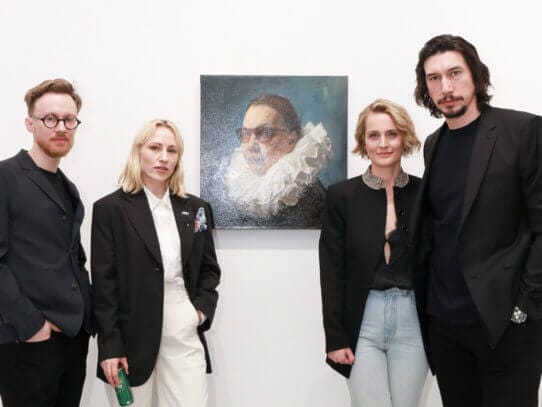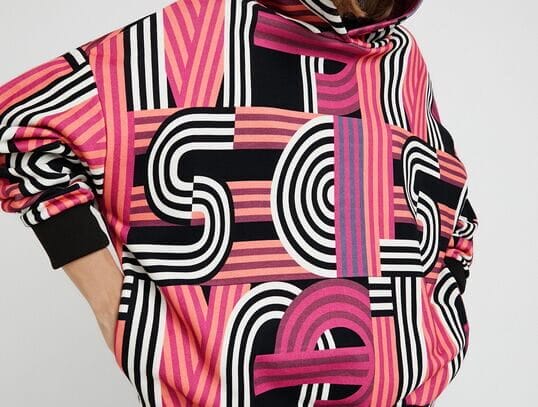CFCL's journey to Paris Fashion Week
In the pulsating heart of Tokyo, where modernity meets tradition, Yusuke Takahashi’s journey into the realm of fashion began with an unconventional blend of influences. Born to parents who charted diverse career paths—his father from medicine to law, his mother from fashion journalism to social commentary—Takahashi inherited a fascination for transformation and creativity from a young age.
Inspired by his grandfather, an architect whose designs melded functionality with artistry, Takahashi’s childhood dreams were initially set on shaping spaces and structures. Yet, during his formative years in high school, a newfound passion for fashion, architecture, and interior design began to blossom. The allure of creating wearable art captivated him deeply, especially after encountering the groundbreaking designs of Hussein Chalayan.
Takahashi’s journey into the world of textiles commenced at Tamagawa University, where he immersed himself in the intricacies of dyeing and weaving. It was here that he first glimpsed the transformative potential of fabric, a revelation that set the stage for his future innovations. His studies took a pivotal turn during a stint abroad at Goldsmiths, University of London, where he explored the intersections of art criticism and conceptual art, broadening his creative horizon.
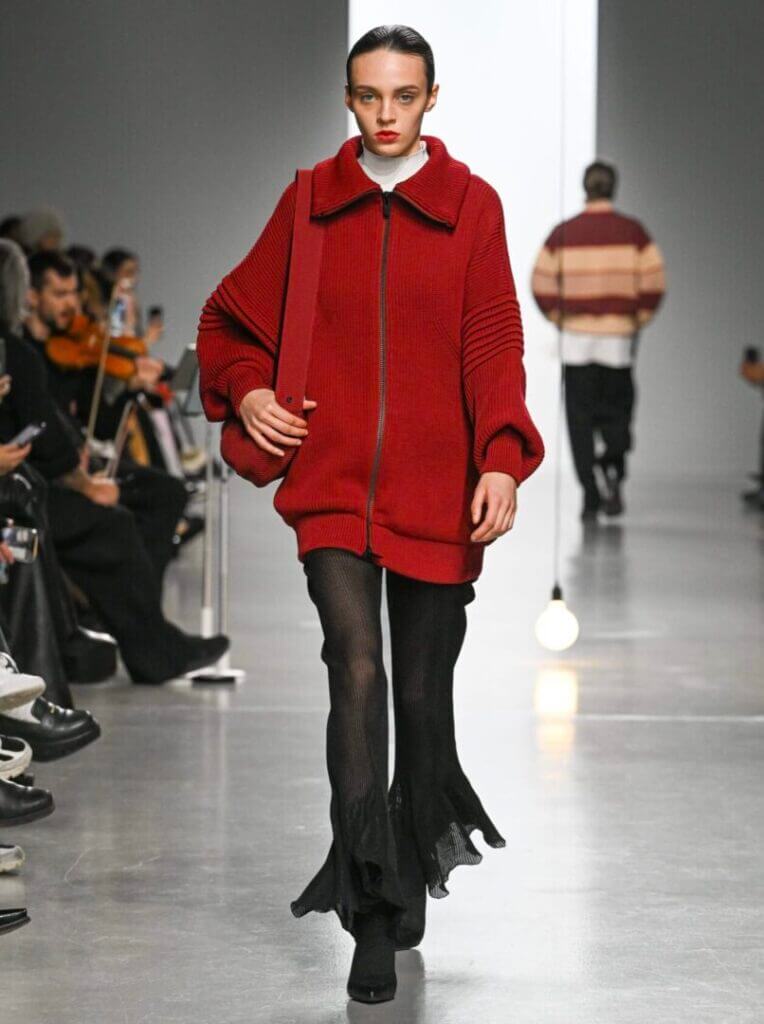
Weaving Tradition and Innovation in Fashion
Enrolling at Bunka Fashion Graduate University in 2008 marked a significant milestone. Here, Takahashi honed his skills in clothing construction and encountered computer programming-aided knitting machines, unlocking new possibilities in knitwear design. His talent and dedication were recognized early on when he won the prestigious 83rd SOEN Award in 2009, marking the beginning of a series of collaborations that would define his career.
In 2010, Takahashi joined the renowned MIYAKE DESIGN STUDIO, contributing to the innovative “132 5. ISSEY MIYAKE” brand. Over the next decade, he crafted numerous collections that pushed the boundaries of traditional Japanese craftsmanship. His tenure saw him experiment with unconventional materials like Shiroishi Washi—Japanese paper—creating garments that blended functionality with cultural heritage.
A global odyssey spanning over 40 countries exposed Takahashi to diverse perspectives on fashion and sustainability. These experiences sparked a profound introspection about the role of clothing in society. Inspired by a transformative journey to Varanasi, India, he embraced the ethos of everyday elegance, shaping his philosophy to create garments that resonate beyond trends—garments that enhance lives and embody sustainability.
In 2020, with the birth of his daughter and a heightened awareness of environmental stewardship, Takahashi founded CFCL Inc. Armed with a vision to redefine contemporary fashion, CFCL’s ethos, “Clothing For Contemporary Life,” blends sophistication with consciousness. The brand’s pioneering use of computer programming-aided knitting technology and sustainable fibers garnered accolades, including the MAINICHI FASHION GRAND PRIX 2021 and the FASHION PRIZE OF TOKYO 2022.
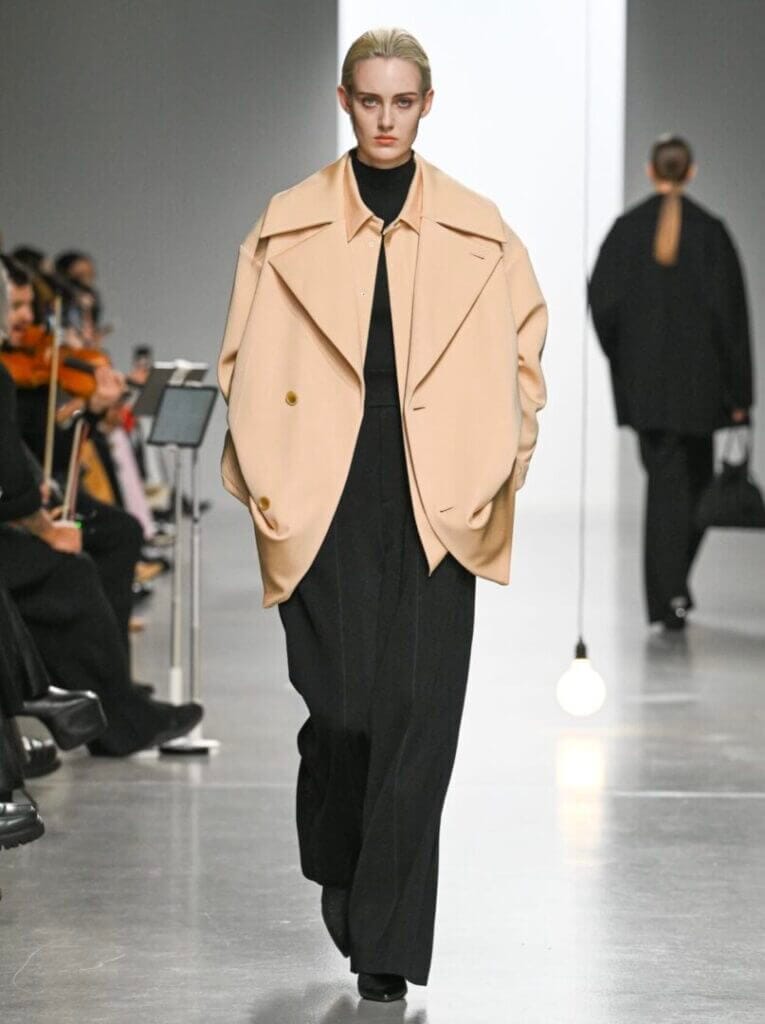
Yusuke Takahashi’s journey to sustainable fashion
CFCL’s journey to Paris Fashion Week and its distinction as Japan’s first B Corporation-certified apparel brand underscore Takahashi’s commitment to innovation and ethical fashion. The latest Spring/Summer 2024 collection unveiled a fusion of craftsmanship and modernity, showcasing Takahashi’s vision to merge synthetic and natural fibers seamlessly.
With the launch of a state-of-the-art factory and knitting laboratory in Tokyo, CFCL sets the stage for future collaborations with traditional artisans, pushing the boundaries of material innovation. Takahashi’s dream—to weave tradition and innovation into the fabric of contemporary fashion—continues to evolve, inspiring a new era where sustainability and style intertwine harmoniously.
In Yusuke Takahashi’s world, every thread tells a story—a story of heritage, innovation, and a relentless pursuit of fashion that transcends time.
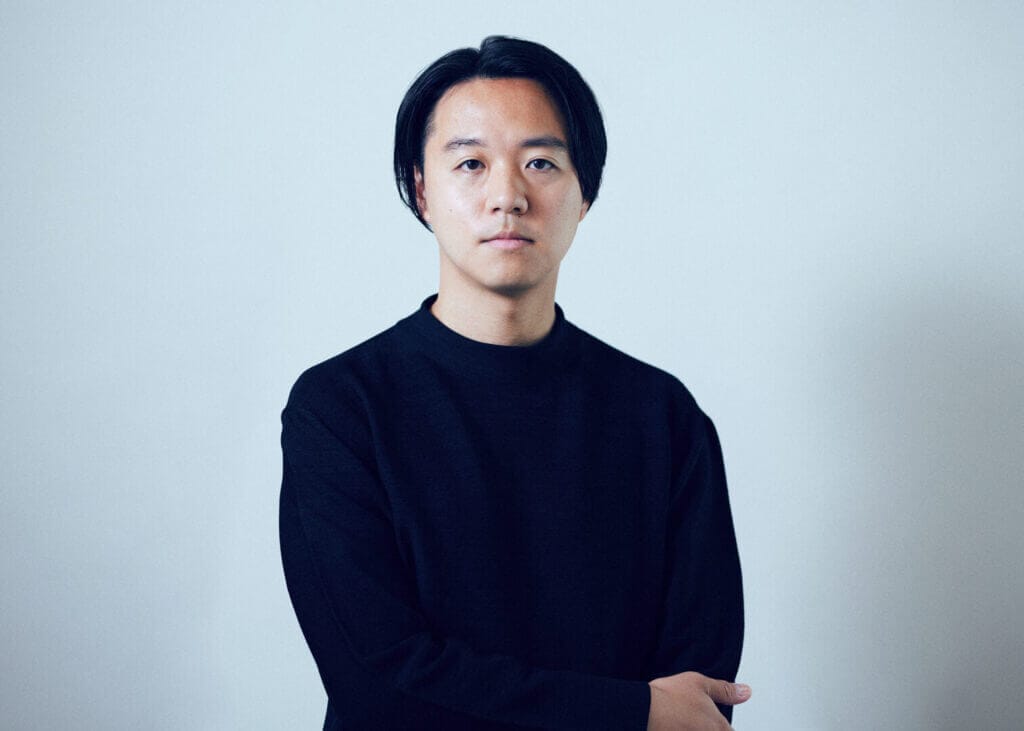
In an exclusive interview with Yusuke Takahashi, the visionary founder of CFCL Inc., we explore the intersection of innovation, sustainability, and cultural heritage that defines his approach to fashion. As a pioneer in computer programming-aided knitting technology and advocate for sustainable practices, Takahashi’s journey underscores his commitment to creating “Clothing For Contemporary Life,” blending functionality with elegance while pushing the boundaries of sustainable fashion. Here, he shares insights into CFCL’s design philosophy, its strategic evolution, and the meticulous craftsmanship that distinguishes his brand on the global stage.
Interview with Yusuke Takahashi: Redefining Fashion with CFCL
Interviewer: Joseph DeAcetis
Joseph DeAcetis: How would you define your idea of fashion, and what is your design philosophy? Could you also share your approach to presentations, your portfolio, and what distinguishes you as a designer?
Yusuke Takahashi: My design philosophy revolves around creating “Clothing For Contemporary Life.” I believe it’s a fashion designer’s responsibility to enhance society through clothing, akin to how a baker brings daily joy with delicious bread. Fashion should adapt to societal needs, presenting ideas that evolve through experimentation and a deep understanding of what people require and express.
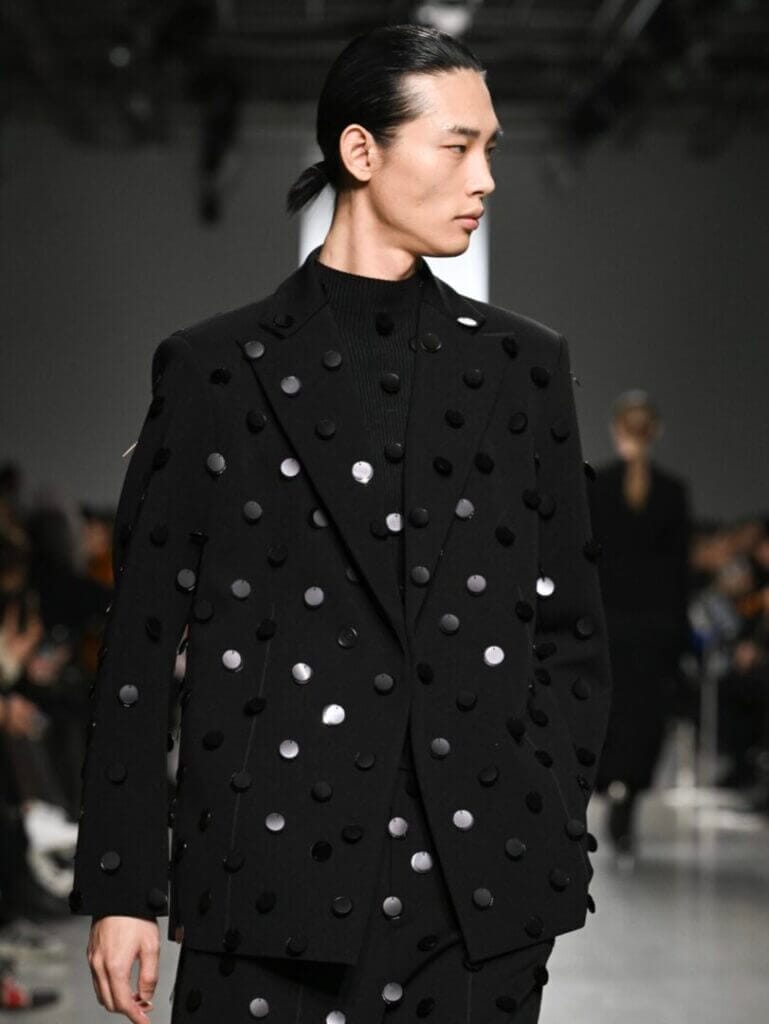
JD: Can you confidently outline the brand’s vision and design aesthetic, its evolution, and how your passion integrates into the fashion house’s creative force?
YK: At CFCL, we specialize in advanced computer programming-aided knitting technology and regenerated synthetic fibers. While knitwear traditionally leans casual, we see a rising trend for sophisticated knit dresses and suits made from synthetic fibers, particularly high-quality recycled polyester. These materials offer durability, quick-drying properties, and easy maintenance, appealing universally across different body types and global markets. Our commitment lies in crafting elegant, comfortable styles with minimal waste, pushing boundaries in sustainable fashion.
JD: How does CFCL navigate changing fashion trends while staying true to its core identity? Could you delve into the company’s design process, team structure, and upcoming collections?
YK: CFCL maintains iconic products while adapting details to align with trends, ensuring our innovative knitting technology remains at the heart of our creations. We foster deep relationships with skilled artisans and cutting-edge textile manufacturers, underpinning our commitment to quality and innovation. Our design process is meticulous, blending developmental, promotional, and commercial considerations to consistently meet market demands while setting new standards in the industry.
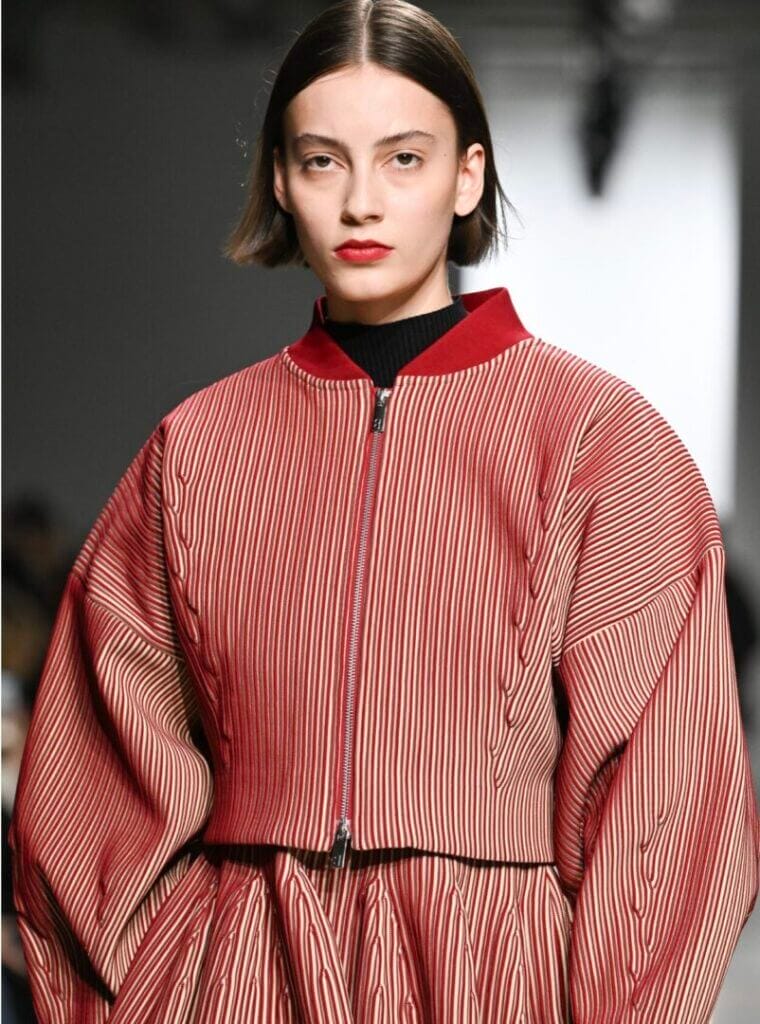
JD: How does the company respond to changing fashion trends while maintaining its core identity, and what is the company’s design process, team structure, and future collections?
YK: We have several iconic products that have already been established. Even though we slightly change the details of the designs to match the trend, the underlying technology has not been changed. We have been selling those products since our debut collection and continue to produce in phenomenal numbers. This has led us to build relationships of trust with skilled factory artisans, the makers of one-of-a-kind computerized knitting machines, and world-class textile manufacturers. The supply chain itself supports CFCL, and we intend to work with them to set a new standard for the next era.
JD: Can you walk us through your design process from concept to completion and how do you stay updated with the latest fashion trends and incorporate them into your designs?
YK: CFCL’s design process has two paths. One is to create interesting knitting fabrics. We have a knitting lab where we experiment daily to explore the possibilities of unexpected creations using combinations of yarns and textures. We also regularly visit our supply factories to look for interesting pieces of knitted fabrics as reference archives. If we are able to create an interesting knit fabric, we will try to make a dress out of it. The other path is to make knitwear out of standard clothes that already exist, such as shirts, tuxedo jackets, bomber jackets, T-shirts, and denim. These items are originally made with woven fabrics, therefore, when made with high-gauge knit, we can create new comfortable clothes, unexpectedly. Many knit fabrics are developed over a period of more than a year, and only the carefully selected prototypes join our collection. The prototypes that do not make it into the collection are considered for use in the next season, as themes are considered by looking at the knit fabrics of the entire collection. We are careful not to inadvertently introduce fashion trends by mistake. However, if the earth gets hotter, we will need shorter pants and skirts, because people who know how to dress comfortably will not choose uncomfortable clothes. Therefore, we are always conscious of such major trends of the times.

JD: Can you tell me about the most recent collection, what you and the team learned from it, and what’s your aim in moving the design philosophy forward?
YK: We created the theme of “Cadence” and focused on simple, practical clothes worn with modesty and elegance. This is our eighth collection. There are still many products that are missing in merchandising. The reason we set that theme was because CFCL was lacking in sporty outerwear, and we are conscious of finding areas of CFCL where there is a large room for growth in design and making them the subject of research for our team.
JD: What software and tools do you use in your design work, what is your proficiency with design software, understanding of different fabrics and materials, and familiarity with production processes? Discuss your technical skills and how they enhance your creativity and productivity?
YK: My design team and I are familiar with iPad Pro and the software Procreate. All our design drawings, mood boards, styling boards, merchandising maps, and floor plans for shows and shoots are created and shared almost daily via Slack and Dropbox digitally, so the use of paper is rare. Remote work and a flex-time system facilitate cross-border work and design team meetings. The selected design is replaced by a design instruction sheet with knitting structure and dimensional details, which is forwarded to a knit programmer, a 70-year-old skilled programmer who reviews the instructions, performs the programming, and produces a prototype in the knitting lab, much like a 3D printer, which is delivered to the studio as early as the next day. The lab does not have fabric racks like typical apparel manufacturers. When we request material development from our trusted yarn makers, they develop different variations of yarn at their expense. We have been using the same yarns for years and have developed a strong relationship with them by consistently placing orders. We create 150 styles each season, but we use less than 10 different yarns, 90% of which are the same yarns we have used in the previous season. We never change textile makers just to make a new collection look fresh.
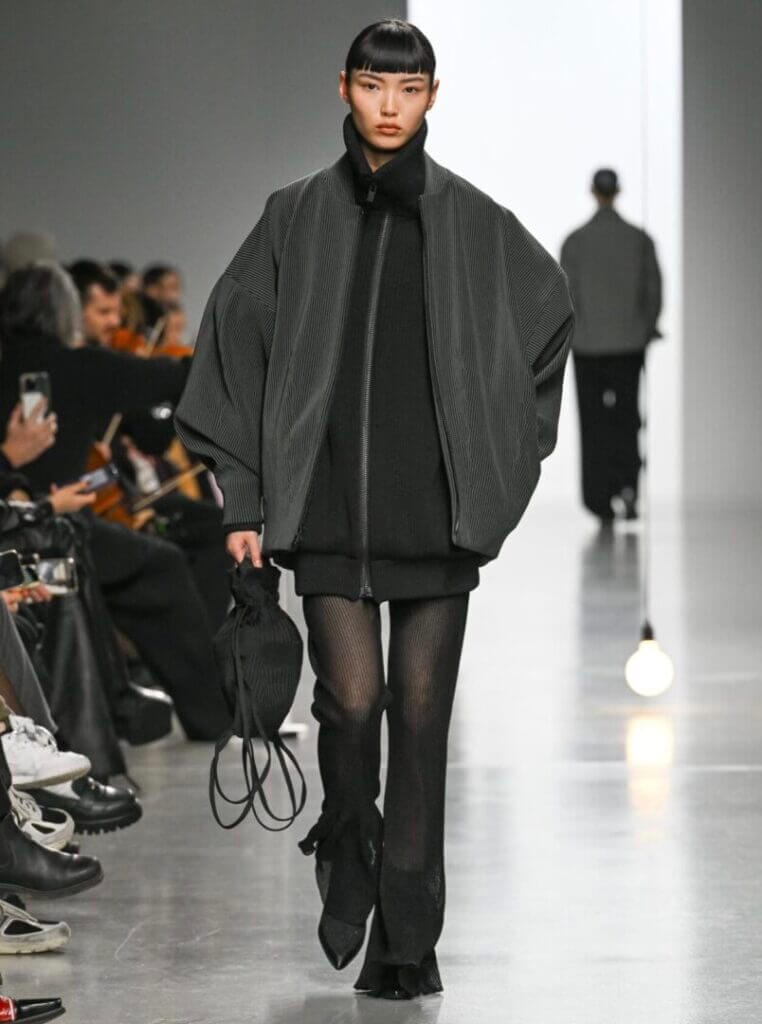
JD: How do you handle feedback or criticism of your designs?
YK: Our brand has only existed for four years and is still developing in many aspects. Critique is essential for CFCL’s growth, and we will take as much input as possible, prioritize it, and act on it immediately. On the other hand, I feel we need to have a deeper internal conversation about our direction and create a more detailed global strategy as soon as possible.
JD: How would you describe your personal style?
YK: I am aware that I am a fashion designer with a rationalist sensibility. I see clothing as a product, not as a style, and I seek a clear reason for my designs. However, my starting point of creation always comes from the feeling of wanting to challenge the uncertain aesthetic that wells up inside of me.
JD: How do you collaborate with other departments, such as marketing and production, during the design process?
YK: CFCL has a merchandising team that analyzes sales and they are the bridge between wholesale (both domestic and international), retail, marketing and e-commerce teams, and the design and production teams. In our design meetings, we clearly categorize designs as either developmental (showpieces unconcerned with price or production), promotional (items that create freshness), or commercial, and the proportions of these categories are clear. The design team creates the collection by constantly absorbing the previous year’s order results, sell-throughs, and feedback from our store staff. The production team always works with the design team, merchandising team, logistics team, and sustainability team. CFCL is always mindful of openness of the company. The offices are basically free-address, promoting communication across departments. All direct stores share detailed sales reports to internal staff on a daily basis. The company’s operating income and SG&A expenses are disclosed at the closing time of accounts, providing all employees an opportunity to think about the company’s growth.
JD: List some of your design influences, both past and present – and, do you prefer traditional illustrating styles or newer digital mediums?
YK: I believe that a brand needs roots and design needs context. The deeper the history, the more valuable it is. Both design and fashion emerged from 19th-century modern society in Europe. The 1873 Vienna World’s Fair, where the Japanese government participated for the first time, was an opportunity for Japan to experience this value. The beginning of design in Japan was when potteries, which had been made intuitively by craftsmen, began to be patterned and mass-produced under the direction of the Japanese government for export to other countries. In 1926, the Mingei movement was launched in Japan, founding beauty in crafts used in everyday life, establishing a Japanese design style. I believe that the fascination of Japanese design is concentrated here, and CFCL’s designs are always intended to be tools that support your everyday life in a modest and beautiful way. I feel the same story with MUJI, UNIQLO, and PLEATS PLEASE ISSEY MIYAKE. They are different types of brands, but their strategies are remarkable in that they value a Japanese perspective that is appreciated around the world. I prefer digital tools because they are convenient. We are looking for things that are more convenient.
JD: Tell our viewers about the projects you’re most proud of and why?
YK: The challenge of making clothes using only computer, programming, and knitting technologies has the potential to showcase a better future for the fashion industry in Japan and around the world. In Japan, clothing used to be manufactured all over the country, but now it is less than a quarter of what it used to be in its heyday.
About the Author:
Joseph DeAcetis covers the intersections of style, culture, art, and fashion, with a particular focus on the evolving landscape of menswear. Throughout his career, he has penned award-winning columns for Esquire, People Magazine, Robb Report, and Playboy.
Most recently, he held the position of Creative Fashion Director at Forbes Media, contributing as both critic and reporter. Joseph has extensively explored the significance of dressing for success and the impact of technological advancements on the fashion industry in the twenty-first century. Additionally, he serves as a Professor at the Fashion Institute of Technology and currently holds the role of Editor at StyleLujo.com, while also launching his LATINX menswear brand, POTRO.
Contact Information:
Email: jdeacetis@gmail.com
Save Article



